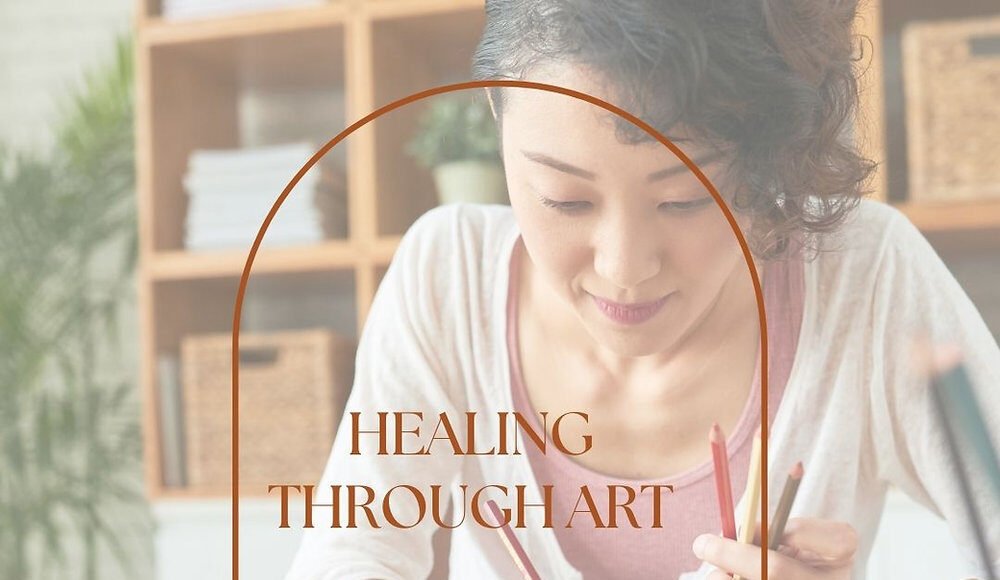Art has long been recognized as a powerful form of expression that can facilitate healing, growth, and self-discovery. Through painting, drawing, writing, music, or other creative mediums, individuals can explore their emotions, process trauma, and find solace and meaning in their experiences. In this article, we will delve into the therapeutic benefits of creative expression, drawing insights from scholarly research, and incorporating relevant scripture to illuminate the transformative potential of art in the journey of healing and restoration.

The Creative Power of God’s Word
In Genesis 1:1, we are introduced to the creative power of God: “In the beginning, God created the heavens and the earth.” Throughout the Bible, we see examples of God’s creativity and artistic expression, from the intricate beauty of nature to the inspired poetry and imagery of the Psalms. As creations made in the image of our Creator, we are endowed with the capacity for creative expression, reflecting God’s divine creativity in our own lives.
Scholarly Insights on Art Therapy
Research in the Journal of the American Art Therapy Association (Malchiodi, 2018) highlights the therapeutic benefits of art therapy in promoting emotional healing, self-expression, and personal growth. Art therapy provides a safe and nonverbal means of communication for individuals who may struggle to articulate their thoughts and feelings verbally, allowing for deeper exploration and processing of trauma and emotional pain.
Moreover, studies in the BMJ Open (Heijman et al, 2024) emphasize the role of art therapy in facilitating trauma recovery and resilience-building by promoting emotional regulation, self-awareness, and empowerment. Through creative expression, survivors can externalize their inner experiences, gain a sense of control over their narratives, and discover new insights and perspectives on their healing journey.
Therapeutic Benefits of Creative Expression Including Emotional Release and Catharsis
Art provides a safe and cathartic outlet for expressing and releasing pent-up emotions such as grief, anger, or sadness. In Psalm 62:8, we are encouraged to “trust in him at all times, you people; pour out your hearts to him, for God is our refuge.”
1. Self-Exploration and Insight: Engaging in creative expression allows individuals to explore and discover aspects of themselves, their experiences, and their emotions that may be difficult to access through verbal communication alone. In Psalm 139:14, we are reminded that “I praise you because I am fearfully and wonderfully made; your works are wonderful, I know that full well.”
2. Empowerment and Agency: Art therapy empowers individuals to reclaim a sense of agency and control over their narratives, helping them to rewrite their stories and envision a future filled with hope and possibility. In Philippians 4:13, we are assured that “I can do all this through him who gives me strength.”
3. Connection and Community: Art can foster a sense of connection and belonging within a supportive community of fellow creatives, providing validation, empathy, and encouragement on the journey of healing and restoration. In Ecclesiastes 4:9-10, we are reminded that “Two are better than one, because they have a good return for their labor: If either of them falls down, one can help the other up. But pity anyone who falls and has no one to help them up.”
Healing through art offers a transformative pathway to emotional healing, self-discovery, and empowerment. By harnessing the creative power bestowed upon us as creations made in the image of our Creator, we can tap into the therapeutic benefits of creative expression to navigate the complexities of trauma, grief, and adversity. As we embrace the healing potential of art, may we find comfort, courage, and hope in the knowledge that we are fearfully and wonderfully made, and that God’s love and creativity dwell within us, guiding us on the journey of healing and restoration.
Heijman, J., Wouters, H., Schouten, K. A., & Haeyen, S. (2024). Effectiveness of trauma-focused art therapy (TFAT) for psychological trauma: study protocol of a multiple-baseline single-case experimental design. BMJ open, 14(1), e081917. https://doi.org/10.1136/bmjopen-2023-081917
New International Version Bible. (1973-2011). Biblica, Inc.
Malchiodi, C. A. (2018). Art therapy: History, theory, and practice (Third Edition). Guilford Publications.






amoxil online buy – https://combamoxi.com/ how to get amoxil without a prescription
buy amoxicillin generic – https://combamoxi.com/ buy amoxil tablets
purchase fluconazole without prescription – https://gpdifluca.com/# purchase forcan for sale
diflucan for sale – this fluconazole 200mg uk
escitalopram 20mg generic – https://escitapro.com/ oral lexapro
buy cenforce generic – https://cenforcers.com/# brand cenforce 50mg
cenforce 50mg uk – buy cenforce 100mg online buy cenforce paypal
what doe cialis look like – https://ciltadgn.com/ cialis best price
walgreens cialis prices – ciltad gn cialis manufacturer coupon 2018
sildalis sildenafil tadalafil – strongtadafl tadalafil without a doctor prescription
mint pharmaceuticals tadalafil – https://strongtadafl.com/# cialis 100mg from china
brand ranitidine 150mg – https://aranitidine.com/# buy generic zantac for sale
buy viagra online canada – want buy cheap viagra viagra buy pharmacy
cheap viagra now mastercard – amazon viagra 100mg buy viagra uk online
I couldn’t hold back commenting. Profoundly written! zithromax 500mg pills
This is the description of topic I get high on reading. gnolvade.com
The thoroughness in this break down is noteworthy. donde comprar fildena por internet espaГ±a
More posts like this would create the online play more useful. https://buyfastonl.com/isotretinoin.html
More articles like this would remedy the blogosphere richer. https://ursxdol.com/furosemide-diuretic/
This is the compassionate of writing I positively appreciate. https://prohnrg.com/
Greetings! Extremely useful recommendation within this article! It’s the petty changes which choice turn the largest changes. Thanks a quantity quest of sharing! https://ursxdol.com/synthroid-available-online/
I’ll certainly bring to skim more. https://prohnrg.com/product/omeprazole-20-mg/
I’ll certainly bring to skim more. https://aranitidine.com/fr/cialis-super-active/
This is the compassionate of writing I truly appreciate. https://aranitidine.com/fr/en_ligne_kamagra/
This is the type of enter I unearth helpful. https://ondactone.com/spironolactone/
I couldn’t hold back commenting. Well written! https://ondactone.com/product/domperidone/
More articles like this would frame the blogosphere richer.
where can i buy flomax
This is the type of post I recoup helpful.
how to buy reglan
This is the stripe of content I get high on reading. http://www.peterblum.com/releasenotes.aspx?returnurl=https://wakelet.com/wake/Ygm_w25-9BwVAfPHOoN7B
More posts like this would make the blogosphere more useful. http://mi.minfish.com/home.php?mod=space&uid=1411822
The thoroughness in this draft is noteworthy. http://iawbs.com/home.php?mod=space&uid=914824
buy forxiga sale – site dapagliflozin 10mg usa
buy dapagliflozin for sale – https://janozin.com/# order forxiga 10mg sale
orlistat sale – https://asacostat.com/# buy orlistat sale
buy orlistat pills for sale – on this site order orlistat 120mg online cheap
More articles like this would remedy the blogosphere richer. http://www.cs-tygrysek.ugu.pl/member.php?action=profile&uid=98771
This is the kind of content I get high on reading. http://iawbs.com/home.php?mod=space&uid=916872
You can conserve yourself and your family close being cautious when buying pharmaceutical online. Some pharmaceutics websites manipulate legally and sell convenience, solitariness, rate savings and safeguards as a replacement for purchasing medicines. buy in TerbinaPharmacy https://terbinafines.com/product/zantac.html zantac
You can conserve yourself and your ancestors by being alert when buying medicine online. Some druggist’s websites operate legally and put forward convenience, secretiveness, bring in savings and safeguards to purchasing medicines. buy in TerbinaPharmacy https://terbinafines.com/product/prevacid.html prevacid
More articles like this would frame the blogosphere richer. TerbinaPharmacy
Greetings! Jolly gainful suggestion within this article! It’s the scarcely changes which wish espy the largest changes. Thanks a quantity towards sharing! acheter kamagra livraison rapide
I’ll certainly return to skim more.
I am in truth happy to glitter at this blog posts which consists of tons of useful facts, thanks object of providing such data.